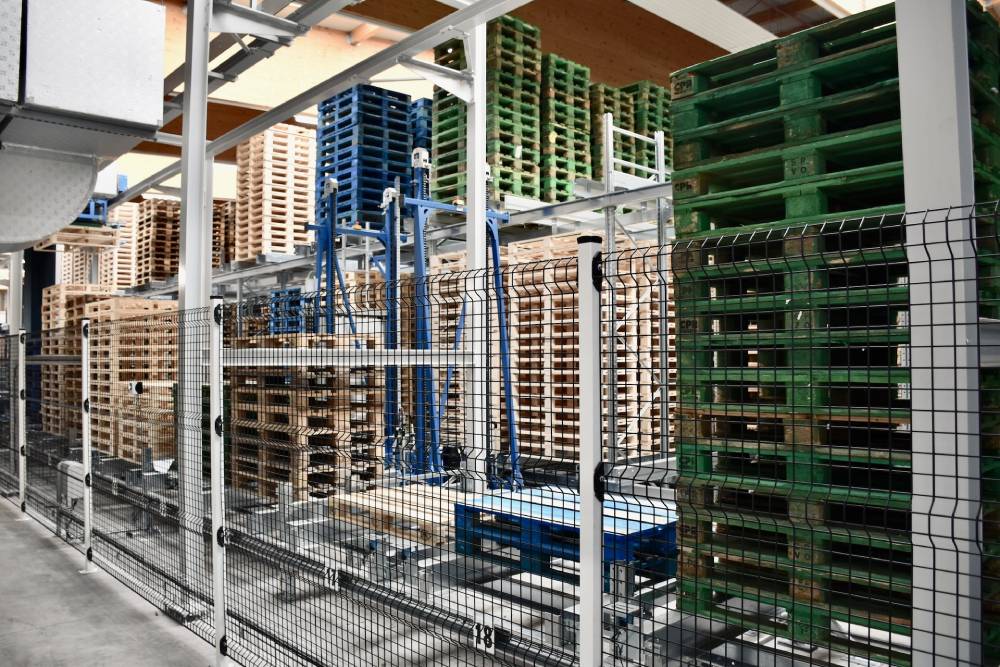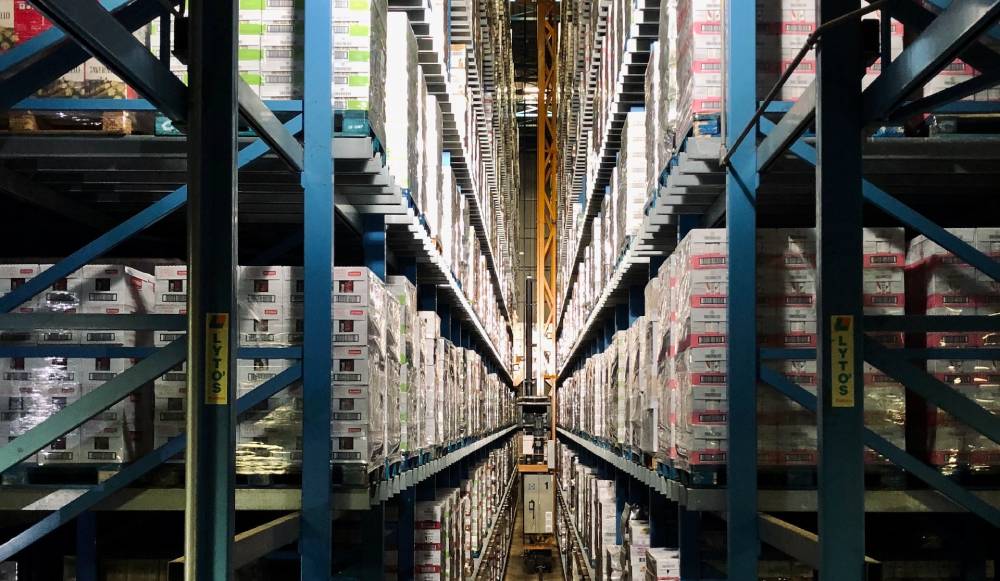
Warehousing principles are the guidelines that govern a warehouse’s efficient and effective operation. They help to ensure that goods are stored safely, securely and in an organised way, so they can be easily retrieved when needed.
In this article, we will dive into the most important principles to maximise your warehouse’s efficiency and safety. Read on and find out what they are.
The Most Important Warehouse Principles
Many different warehousing principles can be adopted to help you with managing warehouse inventory. We will dive into what we believe are the most important ones. These are:
- First in, first out (FIFO)
- Last in, first out (LIFO)
- Just in time (JIT)
- Zone picking
- Crossover storage
- Shelf life management
Each of these principles has its advantages and disadvantages, so it is important to carefully consider which ones will be most suitable for your warehouse operation. Implementing even just a few of these principles can help improve your warehouse’s overall efficiency and make it run more smoothly.
First in, first out (FIFO)
First off, we start with first in, first out. The FIFO principle is one of the most important concepts in warehouse management. It stands for “first in, first out” and refers to the practice of storing and retrieving items in the order in which they were received. This system is used to ensure that items are rotated properly, and that inventory is accurately tracked.
There are a few different ways to implement the FIFO principle in a warehouse. The most common method is to use bin labels or tags that indicate the date an item was received. This allows workers to see which items need to be used first easily.
Another option is to use a computerised system that tracks the order in which items are received and stored. This can be helpful for larger warehouses with a lot of inventory.
Last in, first out (LIFO)
The LIFO principle is the opposite of the FIFO principle. It stands for “last in, first out” and refers to the practice of storing and retrieving items in the reverse order in which they were received. This system is used to ensure that items are rotated properly, and that inventory is accurately tracked.
Just like FIFO, you can use bin labels and computerised systems to track everything.
The LIFO principle is often used in conjunction with the FIFO principle. This allows for more accurate inventory tracking and helps ensure that items are used in a timely manner.
Just in time (JIT)
The Just in time (JIT) principle is a warehouse management technique that aims to improve the efficiency of inventory management by reducing waste and maximising space utilisation.
JIT can be implemented in a number of ways, but one common method is to use an automated storage and retrieval system (AS/RS).
AS/RS systems are computer-controlled and can be programmed to store and retrieve inventory in a specific sequence that reduces the overall amount of time and effort required to manage the warehouse.
Another way to implement JIT is through the use of Kanban systems. Kanban is a Japanese word meaning “sign” or “card,” and in the context of JIT, refers to the use of physical cards or boards to track the movement of inventory through the production process. By visualising the flow of inventory, Kanban can help to identify areas where waste is occurring and make adjustments to the process accordingly.
JIT techniques can be applied to any type of warehouse operation but are especially well-suited to those that are time-sensitive or space-constrained. When implemented correctly, JIT can help to improve the overall efficiency of the warehouse and lead to significant cost savings.

Warehousing principles
Zone picking
The Zone picking principle is a warehouse management technique that aims to improve efficiency and productivity by dividing the storage area into different zones. This allows for more efficient picking, as pickers can be assigned to specific zones and items can be stored in a more logical way.
To implement the Zone picking principle, you will first need to divide your storage area into different zones. Each zone should be dedicated to a specific type of product or category of products. Once you have done this, you will need to assign pickers to each zone.
Pickers should only be responsible for picking items from their assigned zone. This will help to improve efficiency and accuracy as pickers will become familiar with the items in their zone and will be less likely to make mistakes.
You will also need to ensure that items are stored in a logical way within each zone. This means that items should be stored according to how they will be picked.
For example, if items are always picked in the same order, they should be stored in that order in the warehouse. This will help to further improve efficiency as pickers will not need to search for items.
The Zone picking principle is a simple but effective way to improve the efficiency of your warehouse.
By dividing the storage area into different zones and assigning pickers to each zone, you can ensure that items are picked more quickly and accurately. Implementing the Zone picking principle can help to improve your bottom line.

Photo by Arno Senoner on Unsplash
Shelf life management
The Shelf life management principle is one of the most important principles in warehouse management. It dictates that products with a shorter shelf life should be stored closer to the shipping area, while products with a longer shelf life can be stored further away.
By implementing this principle, warehouses can ensure that products are shipped out before they expire, and that expired products are not shipped out.
There are a few different ways to implement the Shelf life management principle in warehouse management. One way is to store products with a shorter shelf life in a separate area from products with a longer shelf life. This can be done by creating two sections in the warehouse, one for each type of product.
Another way to implement the principle is to store products with a shorter shelf life in front of products with a longer shelf life. This can be done by putting the products on shelves in such a way that the shorter shelf life products are in front of the longer shelf life products.
The most important thing when implementing the Shelf life management principle is to make sure that products with a shorter shelf life are shipped out before they expire. By doing this, warehouses can avoid shipping out expired products and can ensure that products are shipped to customers in a timely manner.
If you follow the Shelf life management principle, your warehouse will be able to run more efficiently and will be able to provide better customer service.
Crossover storage management
Crossover storage management is a principle that can be used in warehouse management to help improve inventory accuracy and organisation.
The basic idea behind crossover storage is to store inventory in more than one location. This way, if one area of the warehouse becomes full or an item needs to be moved, it can be easily relocated without disrupting the entire operation.
Crossover storage can be implemented in a number of ways, depending on the specific needs of the warehouse. One common method is to create two storage areas for each SKU (stock keeping unit).
One area is designated as the primary storage location, where most of the inventory for that SKU is kept. The secondary storage location is used for overflow inventory or for items that need to be temporarily relocated.
Another way to implement crossover storage is to use it for specific types of inventory. For example, fast-moving items can be stored in the primary location, while slow-moving items are kept in the secondary location. This helps to ensure that the most popular items are always available and makes it easier to find items that are not selling as well.
Crossover storage can be a helpful tool for managing inventory in a warehouse. By using this principle, warehouses can improve accuracy and organisation while still being able to easily move inventory around as needed.
Conclusion
Warehousing principles are important tools that can be used to improve the efficiency of your warehouse. By implementing the right principles, you can improve productivity, accuracy, and customer service.
When choosing which principles to implement, it is important to consider the specific needs of your warehouse. With the right principles in place, your warehouse will be able to run more smoothly and will be able to provide better service to your customers.
Author bio
Travis Dillard is a business consultant and an organisational psychologist based in Arlington, Texas. Passionate about marketing, social networks, and business in general. In his spare time, he writes a lot about new business strategies and digital marketing for FindDigitalAgency.
